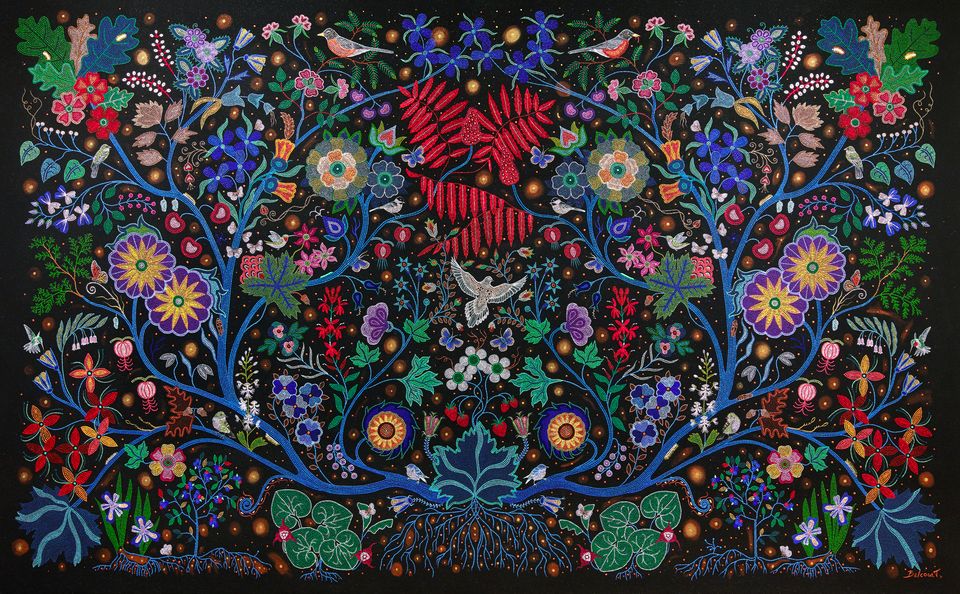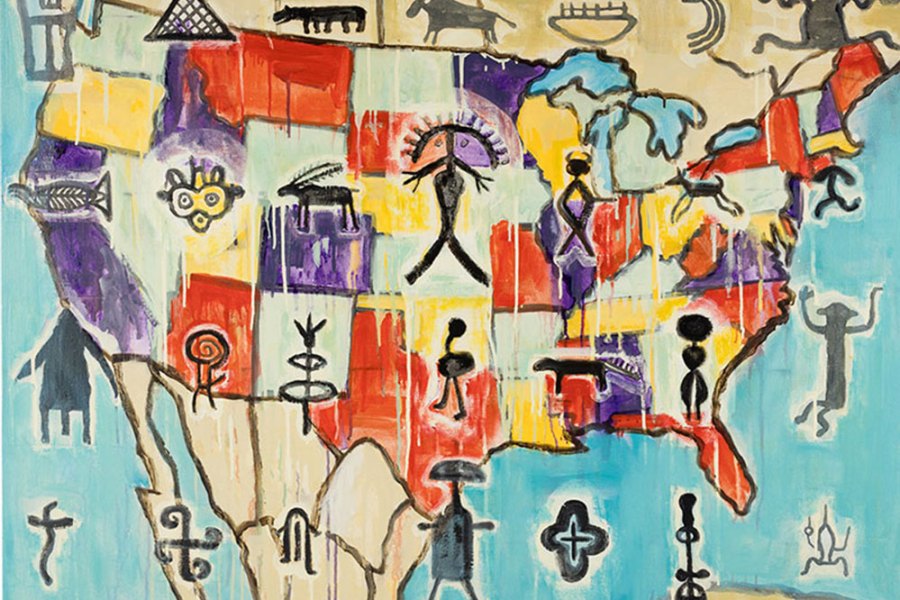Native Expressions: A Visual Exploration of Indigenous Art — Native Expressions: A Visual Exploration of Indigenous Art
1
License: Creative Commons Attribution-NonCommercial-ShareAlike 4.0 International License.
Greetings! I am delighted to share “Native Expressions,” a curated odyssey through the diverse world of Indigenous art. This portfolio is released under the Creative Commons license, reflecting a commitment to accessibility and appreciation for the beauty of Native American artistic expression.
Introduction:
Embark on a visual journey that encapsulates the multifaceted narratives, cultural resilience, and contemporary perspectives of Indigenous communities. The selected artworks challenge stereotypes, beckoning viewers to explore the profound interconnectedness between the artists, their environments, and the broader societal narratives that shape their existence.
Section 2: Theme
Themes:
- Cultural Resilience:
- Explore artworks that echo the enduring strength of Indigenous cultures in the face of historical adversity. Consider adding images of paintings capturing moments of triumph and perseverance, igniting a dialogue on the resilience embedded in Native American heritage.
Example Image: A powerful painting depicting Indigenous triumph over adversity.
:max_bytes(150000):strip_icc()/George-Catlin-buffalo-hunt-3000-3x2gty-59067fbe5f9b5810dc8d0be4.jpg#fixme#fixme)
- Eco-Spirituality:
- Delve into artworks that explore the symbiotic relationship between Indigenous artists and nature. Consider including images of intricate sculptures or mixed-media masterpieces, transcending the canvas and inviting viewers to contemplate the spiritual and artistic endeavors stemming from the profound connection to the environment.
Example Image: A captivating sculpture symbolizing the spiritual connection between Indigenous communities and nature.

Section 3: Analysis
Selected Artist: Jaune Quick-to-See Smith
In the spotlight is Jaune Quick-to-See Smith, a luminary in Native American art. Her masterpiece, “Trade Canoe: Crow” (1992), serves as a profound exploration of the consequences of European colonization on Native communities.  Delve into the historical context, unraveling the impact of pivotal events like the Indian Removal Act, providing insights into the motivation behind the artwork’s creation.
Delve into the historical context, unraveling the impact of pivotal events like the Indian Removal Act, providing insights into the motivation behind the artwork’s creation.
Beyond historical analysis, scrutinize the contemporary relevance of Smith’s work, considering its resonance with present-day discussions on Native American identity and environmental challenges. This section becomes a narrative thread connecting the past, present, and future, inviting readers to appreciate the layers of meaning embedded in these captivating images.
Section 4: Application
Significance of Jaune Quick-to-See Smith’s Art:
Step into a virtual classroom where Jaune Quick-to-See Smith’s art becomes the primary educational tool, offering a transformative experience in understanding the society within which it was created.

As an instructor, guide viewers through the intricate tapestry of Native identity, using Smith’s work as a lens to explore environmental and societal struggles faced by Indigenous communities.
This portfolio, envisioned as an immersive learning space, transcends traditional boundaries, encouraging participants to engage critically and empathetically with the narratives woven into each artwork. Native Expressions is not just a repository of visual treasures but a dynamic platform for fostering a deeper, more nuanced understanding of Native identity and its intricate relationship with broader societal dynamics.
Example Image: A visual representation demonstrating the transformative power of Jaune Quick-to-See Smith’s art.

In essence, this exploration captures the essence of Native Expressions, offering readers a comprehensive and immersive experience into the world of Indigenous art. Through this in-depth analysis, cultivate a greater appreciation for the profound narratives, resilience, and spirituality encapsulated within each brushstroke and sculpted form.
**Conclusion:**
In conclusion, “Native Expressions” serves as a testament to the enduring vibrancy of Indigenous art and its profound impact on our understanding of nature, identity, and societal narratives. Through the curated exploration of themes like cultural resilience and eco-spirituality, this portfolio illuminates the resilience embedded in Native American heritage and the profound connection between Indigenous artists and the environment. Jaune Quick-to-See Smith’s art, exemplified by “Trade Canoe: Crow,” becomes a powerful lens through which we navigate historical complexities and contemporary challenges, weaving together the past, present, and future.
As we traverse the intricate tapestry of Indigenous art, we recognize that this visual journey transcends conventional boundaries, urging us to rethink our relationship with nature and societal narratives. “Native Expressions” goes beyond being a collection of images; it is a dynamic space where the brushstrokes and sculptures echo the resilience of Indigenous cultures and invite us to participate in the ongoing dialogue about justice, identity, and the interconnectedness of all living things.
“Native Expressions” is not a static portrayal but a testament to the diversity and depth of Indigenous art. As we conclude this journey, let it be a catalyst for ongoing exploration, conversations, and actions that foster a more inclusive and harmonious world. The significance of Jaune Quick-to-See Smith’s art extends beyond the frames, challenging us to embrace unconventional perspectives and engage with the complexities of Native identity and environmental stewardship. In this evolving narrative, may “Native Expressions” inspire continued curiosity, respect, and appreciation for the Indigenous voices that shape our collective understanding of art, culture, and the environment.

